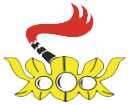Informasi Detil Paper |
|
| Judul: | Analisis Tingkat Pendapatan Rumah Tangga dan Kemiskinan di Daerah Transmigrasi (Kasus di Desa Waihatu, Kecamatan Kairatu, Kabupaten Seram Bagian Barat, Provinsi Maluku) |
| Penulis: | L.O. Kakisina || email: jbdpunpatti@yahoo.com |
| Jurnal: | Budidaya Pertanian Vol. 7 no. 2 - hal. 65-71 Tahun 2011 [ Pertanian ] |
| Keywords: | Analysis of household income, poverty, transmigration area, Waihattu village |
| Abstract: | Poverty is one of the important issues in global and local level. The problem was the economic growth followed by further inequality level of socio economic. This study aimed to determine the income level of household and poverty, factors influence household income level, and to find the strategy to reduce the poverty in transmigration areas in Maluku islands. Samples were determined by using systematic random sampling. The number of respondents was 60 heads of households (10% of the total 588 heads of households). Primary data included the household income and poverty, and factors influencing the household income were obtained through surveys, focus group discussions, and observation. Survey data was obtained through in-depth interviews. Secondary data such as general condition of the location was obtained from the Office of the Waihatu Village, Office of the Subdistrict, Office of District, and Office of Provincial and from relevant literatures. The results showed that the average income of household was highest from the non-agricultural business, that was Rp 10.9 million (63.29%) and from agricultural business was Rp 6.3 million (36.71%) or the income of non-agricultural business was twice higher than the agricultural business. At the level of average income as much as Rp. 17 million/household/year (assuming four persons/family), then the community in the Waihatu village was not classified as poor. But the reality was 45% of them were poor. Based on the results of the regression analysis, the level of household income is affected by 8 major factors that was income from the horticulture crops, followed by income of civil servants, industry, trade, private employees, food crop, fisheries and livestock. Therefore, reducing the poverty can be done by following strategies: 1) to develop technical aspect and markets as well as to use land optimally; 2) to form and develop the farmers institutions; and 3) to facilitate the agriculture sustainable agribusiness (such as through extension approach). |
| File PDF: | Download fulltext PDF

|
| <<< Previous Record | Next Record >>> |
This is an Archive Website
For the New eJournal System
Visit OJS @ UNPATTI
AMANISAL (Perikanan & IK)
| Info
BUDIDAYA PERTANIAN (Pertanian)
| Info
CITA EKONOMIKA (Ekonomi)
| Info
EKOSAINS (Ekologi dan Sains)
| Info
Indonesian Journal of Chemical Research (MIPA)
| Info
JENDELA PENGETAHUAN (KIP)
| Info
MOLUCCA MEDICA (Kedokteran)
| Info
Pedagogika dan Dinamika Pendidikan (KIP)
| Info
TRITON (Perikanan & IK)
| Info
Prosiding Archipelago Engineering 2018
| Info
Prosiding Archipelago Engineering 2019
| Info
Akses dari IP Address 216.73.216.103
